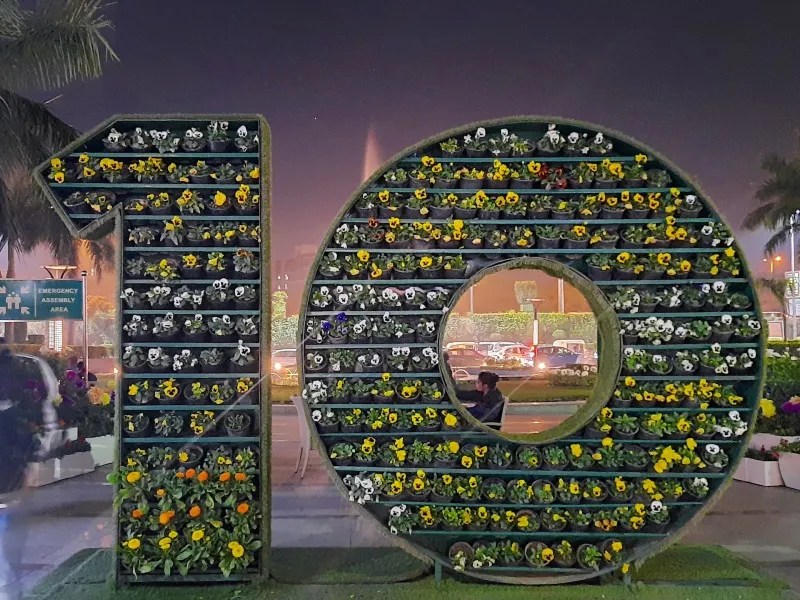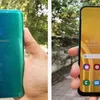Samsung Galaxy A51 is a decent, mid-range smartphone, but could have better cameras
Samsung has done a commendable job with the screen and battery life in the Galaxy A51. But it fails in the camera department and doesn’t seem premium enough to command the price it is asking for.
The Galaxy A51, Samsung’s latest mid-range smartphone, has some big shoes to fill. The Galaxy A50 was one of the company’s best-selling smartphones, and now - in the first month of 2020 – its successor is in India.
Does it have what it takes to live up to last year’s Galaxy A50? Let’s find out.

Design: inspired by the upcoming flagship S-series smartphone
Samsung has started the year with a bang. The Galaxy A51 may not be a radical change from its predecessors but with incremental changes, the company seems to be pushing in the right direction.
The one major difference from the A50/A50s to the A51 is in the design department. Inspired by the upcoming S20 series, the design has got a new sleek look, with a very noticeable camera bump. The smartphone is made of polycarbonate, and has a glass-inspired gradient design on the back.
There’s the quad-camera setup on the rear’s top left corner, a punch-hole display on the front, the volume-rocker and power buttons on the right, and the SIM tray on the left. On the bottom is the USB type-C port flanked by the speaker grill and a 3.5mm headphone jack. The top and bottom both feature tiny microphone cutouts.
Even though the glass-like back gets a ton of fingerprints, the design is quite sleek and modern, and will do Samsung well in the long run.

Samsung is a trustworthy brand for consumers and offering something premium under Rs 25,000 will make a difference, especially in the offline markets.
Display: Super AMOLED for the win
Samsung’s displays are always a class apart vis-a-vis the competition. This time around, the Galaxy A51 is fitted with a 6.5-inch Full-HD+ Super AMOLED display with a 20:9 aspect ratio.
The screen itself is vivid with punchy colours and the sunlight legibility is quite good. An AMOLED display means that the smartphone can have an always-on mode, which is fantastic. The deep blacks make a difference when watching content from Netflix and Amazon Prime.
The one downside to the display is the in-display fingerprint scanner. It’s there on the Galaxy A51, like it is on most modern smartphones, but it isn’t very accurate. When it works, it is fast, but I found it highly inconsistent.
Performance and software: a mixed bag
The Galaxy A51 is powered by Samsung’s own Exynos 9611 processor and is coupled with either 6GB or 8GB of RAM. Whilst the RAM is good enough to handle heavy-duty tasks, the processor lets the smartphone down. It’s a pretty modern chipset, launched in Q3 of 2019, but it can’t hold a candle to many other processors out there.
The phone can handle day-to-day tasks with aplomb. When it comes to gaming, you notice frame rate drops and when it comes to videos, the phone starts heating up.
That’s just a sampling. I tried opening 35 tabs on Google Chrome, took some photos in between, watched a few YouTube videos, and connected to a couple of Bluetooth devices. The phone felt warm and stuttered along.
Still, the brand new One UI 2.0 shines through and through, and makes the best of what it can of the Exynos 9611. Previous versions of One UI and TouchWiz were heavy, bloated, and simply unable to compete with other Android skins. Luckily, One UI, built on Android 10, is fantastic to use on a daily basis.
As a part of Samsung's push for India-specific features, there's a brand new 'useful cards' feature built-in messaging app. This basically filters messages into all, upcoming and offers. These come in the form of visual cards.
The native keyboard - in case you don’t have a preferred one yet - has also been vastly improved. There's also multilingual predictive typing (automatic translation from one language to another) and Smart Crop, which detects the most relevant part of a screenshot and gives you the option to crop it with a single tap.
Samsung introduced these features after conducting extensive consumer research in India.
Battery life: fantastic screen-on-time performance
One can sum the battery life of the Galaxy A51 pretty easily. It’ll last long - with an average of just over five hours of screen-on-time (SoT) - but will take what seems like an eternity to charge from 0-100 percent. It can easily go for a day without having to charge; sometimes, it will also last until the morning hours.
It comes with a 15W fast charger but takes over two hours to fully charge the battery, which just seems a tad too slow in 2020.
Camera: quad cameras the new norm
It seems that the quad-camera setup is here to stay in 2020. The Galaxy A51 features a 48-megapixel primary sensor, a 12-megapixel ultra-wide sensor, a 5-megapixel depth sensor and a 5-megapixel macro sensor. On the front there is a 32-megapixel selfie camera.
The new night mode in the Galaxy A51 works with both the primary and ultra-wide sensors and also with the selfie camera.

In good lighting conditions, the Galaxy A51 performs par course for the hardware it has inside of it. The primary lens is a joy to use. When it comes to low-light photography, the Galaxy A51 begins to struggle a lot. One needs more than just steady hands to get some good shots. It’s the same case with the ultra-wide lens. I also had little to complain with the depth sensor in good daylight conditions.
The biggest issue is with the macro sensor. I just wasn’t able to focus on my subject at all, no matter how close or far I was. The focus seems to be locked in the macro mode - and that is a shame. I think macro shots, if taken with a steady hand, can come out really well.
Even OnePlus, a company whose cameras I’ve complained about since Day One, has done a better job at macro photography on the latest OnePlus 7T smartphone.

The scene optimiser was another pain point while shooting photos with this smartphone. It often failed at detecting basic scenes such as food, if taken from a distance. Up close, it did a really neat job of recognising what I was about to click a photo of.
The verdict: awesome screen and battery, not-so-awesome cameras
The slogan for the brand new A-series smartphones from Samsung is this: “awesome screen, awesome camera, long-lasting battery life.”
Samsung has done a commendable job with the screen (as has always been the case) and with the battery life. Where it fails is in the camera department. Furthermore, the smartphone doesn’t seem premium enough to command the price - Rs 23,999 for the 6GB/128GB variant - that it is asking for from consumers.
There are a couple of other smartphones - Vivo V17, Redmi K20, Oppo Reno 2, and Realme X2 Pro - that are better than the Galaxy A51 in many different areas.
Where the Galaxy A51 beats out the competition is in the display department. You get an unmatched binge-watching experience with the Galaxy A51.
The Galaxy A51 comes in two variants, 6GB/128GB and 8GB/128GB, and three colours, Prism Crush Black, Prism Crush White, and Prism Crush Blue.

One wishes that Samsung had priced this smartphone a little more reasonably. With the impending launch of the Galaxy A71 in India (it has already been released in Vietnam), one might want to wait for what, in all likelihood, will be a better all-round package.
The Galaxy A51 will most definitely not be a knockout punch like last year’s A50/A50s, but Samsung has delivered another reliable option in the under Rs 25,000 price segment.
(Edited by Teja Lele Desai)





1552066003794.jpg?fm=png&auto=format&h=100&w=100&crop=entropy&fit=crop)






